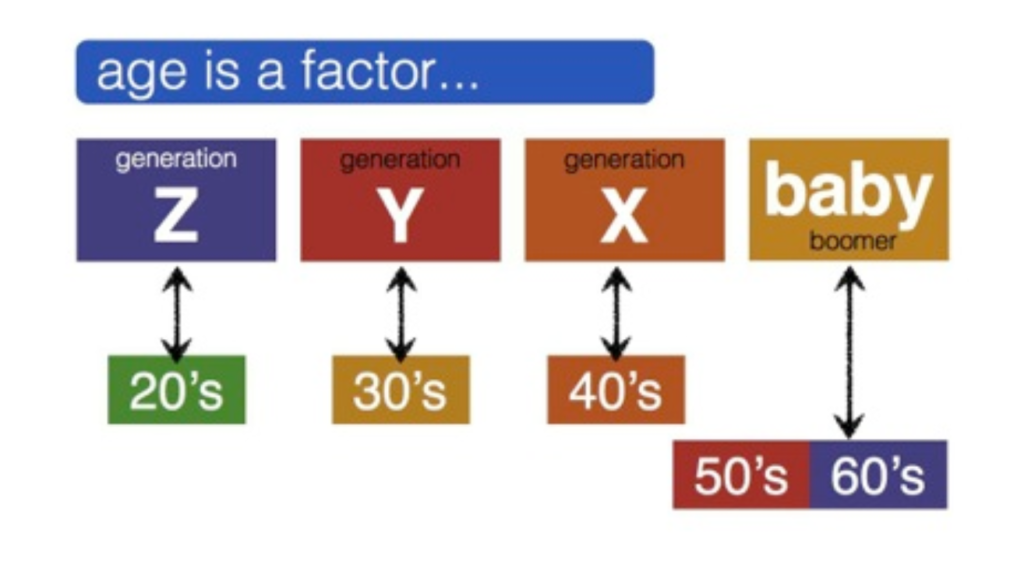Did you watch the debate on CNN? Likely not, as people tune out of the sickening spectacle of two dozen candidates pulling each other down like crabs climbing out of a bucket.
Talk of “moderates” and centrists versus “progressives” and socialists and likely turns the audience off no matter how much they may hate the current incumbent in the White House. But unspoken on cable TV is a concerning trend I have noticed which may affect electoral decision-making far more than the pseudoscientific political babble masquerading as political analysis. Here’s a dirty secret that has kept popping up when I review election results.
The biggest political divide in the United States is age.
Arizona is now America
This was first noted in Arizona which in many ways prefigures the politics of today. In 2010, they passed the first anti-immigration legislation at the state level, SB 1070. Unmentioned of course was the role of the private prison industry. Private prisons proposed the law to rural politicians as a jobs program. Undocumented immigrants would be a new population to fill the for-profit prisons. The prisons would increase jobs but also prop up the population count in the Census to prevent rural areas from losing representation.
As a retirement state and Southwestern state, Arizona has a huge difference between the racial and income profiles of the youth and the elderly. The youth are poorer and more diverse and overall progressive while elderly (often from out of state) are more Republican, very conservative, and fairly racist and anti-immigrant. The defining politician of Arizona is this era is not John McCain (R-AZ) but Sheriff Joe Arpaio, the Massachusetts-born Italian-American known for breaking civil rights laws and placing prisoners in tents in the desert. The politics of older and richer white voters wanting to arrest younger and poorer Hispanics makes more sense now. It just happens to be national now.
Nationally, the age polarization for the youth can be explained by the increased diversity of the under 45 population which has a higher educational attainment, less religiosity, and increased social liberalism. Many in this population are children of immigrants being born after immigration laws were changed after the Civil Rights Movement by the Hart-Cellar Act of 1965. This polarization also seems to extend to Generation X (born 1965-1980) which is now more liberal than it used to be.
Recent Elections and Guide for the Future
This was not always the case. As recently as 2000, Democrats banked on older voters for wins in Florida. But that generation who grew up during the Depression and Franklin Roosevelt has mostly died off. Older people represent Baby Boomers (born 1946-1964) and the Silent Generation (born 1928-1945) who while fairly conservative have become even more so. This affects how people should think about the “moderate-centrist” versus “progressive-socialist” debate on CNN.
Those over 45 have voted Republican in many elections now regardless of the Democrat or the Republican. In 2008 and 2012, they voted for John McCain and Mitt Romney not Barack Obama. Looking at recent national exit polls for U.S. House we see them voting for Republicans 54% in 2014 and 2016. In last year’s midterm election, the over 45 voted 50%-49% for a Republican for Congress while the youth voted 61% – 36% for the Democrats. Nancy Pelosi became Speaker of the House not due to her age group but to the voters half her age and younger.
When you add up all the votes, people over 45 typically represent 60-65% of all voters depending on the state. The vote of the youth ranges from around 30-35% depending on the state. This produces some fascinating results that have little to do with ideology of the candidate. More moderate or “pragmatic” Senate candidates lost the over 45 vote no matter what with numbers that are all pretty similar; North Dakota 44%-56%, Missouri 43%-56%, Indiana 43%-55%, Arizona 46%-53%, Florida 45%-54%, Montana 45%-52%, and Tennessee 36%-62% in 2018. Meanwhile, the exceptions were significantly to the left of center in 2018. Sherrod Brown won the over 45 vote 52%-48% in Ohio and Tammy Duckworth 53%-47% in Wisconsin. That feat was not repeated by the local candidates for governor.
In contrast, the under-45 vote almost uniformly voted Democratic even in uncompetitive races like the Texas governor’s race. Interestingly, ruby-red Tennessee’s Senate election had former Democratic Governor Phil Bredesen win the under-45 vote at a rate higher (61%-38%) than the youthful Beto O’Rourke in Texas (59%-40%). But what made O’Rourke almost make it to the finish line against Ted Cruz while Bredesen ate a 10-point loss? Beto O’Rourke drove the share of the 18-44 vote up to 39% of all voters while Bredesen only had 31% of all voters under the age of 45. He also did slightly better with the over 45 set. Stacy Abrams came even closer to winning than O’Rourke with 40% of all voters under 45 for a less than 2% loss (notwithstanding some electoral shenanigans).
What is the lesson for all of this? Regardless of region or ideology, any reasonably competitive election shows that older voters are going to vote Republican no matter how liberal or conservative the Democrat is. The trick is to more or less forget about winning this age group and focus on building the biggest turnout possible with Generation X, Millennials, and the upcoming Generation Z while reducing the loss amongst the older voters to 8-10 points at best. The drop in the share of the under 45 vote from 47% of voters in 2008 to 46% of voters in 2012 to 44% of voters in 2016 may have made the difference. The candidate that will motivate the youth and speak to their issues and problems and the problems of the planet will be best positioned to do win if we desire the removal of President Donald Trump in 2020.

